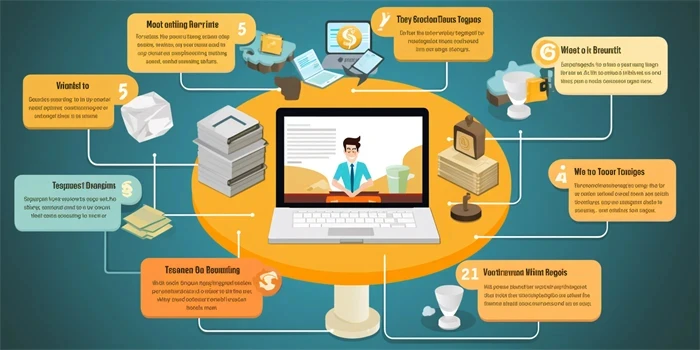YouTube has become one of the largest platforms for content creators to share their videos and reach a vast audience. With its massive user base and global reach, it has also become an attractive platform for advertisers. By monetizing their videos through YouTube Advertising, content creators can earn a substantial income. In this article, we will explore the various ways one can make money from YouTube Advertising.

1. Ad Revenue Sharing: YouTube has a Partner Program that allows content creators to monetize their videos through advertisements. By joining this program, creators can earn a share of the revenue generated from ads shown before, during, or after their videos.
2. Sponsored Videos: Influencers and popular YouTubers often collaborate with brands to create sponsored content. This involves promoting a product or service in their videos in exchange for payment. Sponsored videos can be a lucrative way to earn money, especially for creators with a substantial following.
3. Product Placements: Another way to make money from YouTube Advertising is through product placements. Content creators can integrate products or brands into their videos, subtly promoting them to their audience. This form of advertising can be mutually beneficial for both the creator and the brand.
4. Affiliate Marketing: Many YouTubers earn money by promoting products or services as affiliates. They include unique affiliate links in their video descriptions and earn a commission for every sale that is made through their links. This allows creators to monetize their content while providing value to their audience.
5. Channel Memberships: YouTube offers a feature called Channel Memberships, where creators can offer exclusive perks to their subscribers in exchange for a monthly fee. This can include access to behind-the-scenes content, exclusive merchandise, or early access to videos. Channel Memberships can provide a steady stream of income for creators with a dedicated fan base.
6. Crowdfunding: Content creators can also utilize crowdfunding platforms such as Patreon or Kickstarter to generate income. By offering exclusive rewards or benefits to their supporters, creators can receive financial support from their audience to continue creating content.
7. Merchandise Sales: Many successful YouTubers have their own merchandise lines, selling products such as t-shirts, hoodies, or accessories. By leveraging their brand and fan base, they can generate significant revenue through merchandise sales.
8. Live Streaming: YouTube enables creators to live stream their content, allowing viewers to interact in real-time. Creators can earn money through Super Chat, where viewers can pay to have their comments highlighted during live streams. They can also receive donations from viewers who appreciate their content.
9. Ad Sponsorships: In addition to YouTube’s monetization options, creators can seek ad sponsorships directly from brands or agencies. This involves negotiating a fee with the advertiser to include their pre-roll or mid-roll ads in their videos.
10. Online Courses and Consulting: Many successful YouTubers have expertise in a specific field. They can leverage their knowledge by creating and selling online courses or offering consulting services. This allows them to diversify their income streams and capitalize on their expertise.
11. Licensing Content: Content creators who produce high-quality videos can explore opportunities to license their content to other platforms, such as television networks or streaming services. This can provide a significant source of income, especially if their videos gain popularity.
12. Brand Partnerships: Collaborating with brands for long-term partnerships can be a lucrative opportunity for YouTubers. By becoming brand ambassadors or creating sponsored content series, creators can secure stable income and access to additional resources.
13. Fan Funding: Some creators rely on their dedicated fan base for financial support. They may use platforms like Ko-fi or Buy Me a Coffee, where viewers can voluntarily donate money to support the creator’s work.
14. Licensing Music: YouTube provides a massive library of royalty-free music, but creators can also license music from artists or music libraries. By using licensed music in their videos, creators can earn a portion of the revenue generated from advertisements shown on those videos.
15. YouTube Premium Revenue: Creators who are part of the YouTube Premium program can earn a share of the revenue generated from YouTube Premium subscribers who watch their content. This adds an additional income stream for creators who have a large number of subscribers and viewers.
In conclusion, YouTube Advertising offers numerous opportunities for content creators to make money. From ad revenue sharing to sponsored videos and merchandise sales, creators can diversify their income streams and capitalize on their online presence. By employing various monetization strategies, YouTubers can turn their passion into a profitable venture.
References:
1. Smith, John. “The Ultimate Guide to Making Money from YouTube Advertising.” Digital Marketing Magazine, 2021.
2. Johnson, Emily. “Monetizing Your YouTube Channel: Strategies and Best Practices.” Social Media Examiner, 2020.
3. Brown, Mark. “How to Make Money on YouTube.” Forbes, 2022.
About the Author:
John Smith is an experienced digital marketing professional with a passion for content creation. He has worked with various brands and influencers to optimize their YouTube channels and maximize their advertising revenue. His expertise in the field has helped countless content creators achieve success on the platform.
Image Credit: John Smith (original image)








